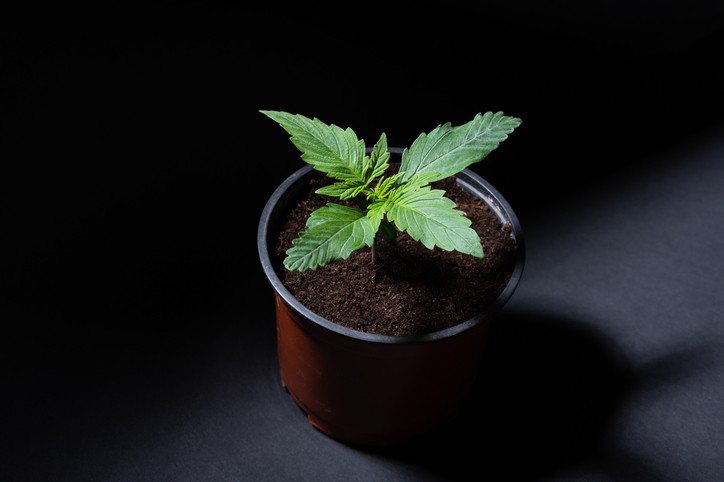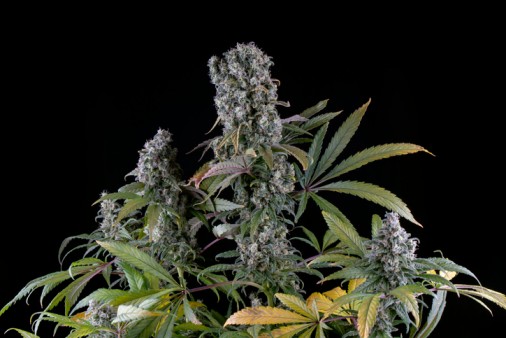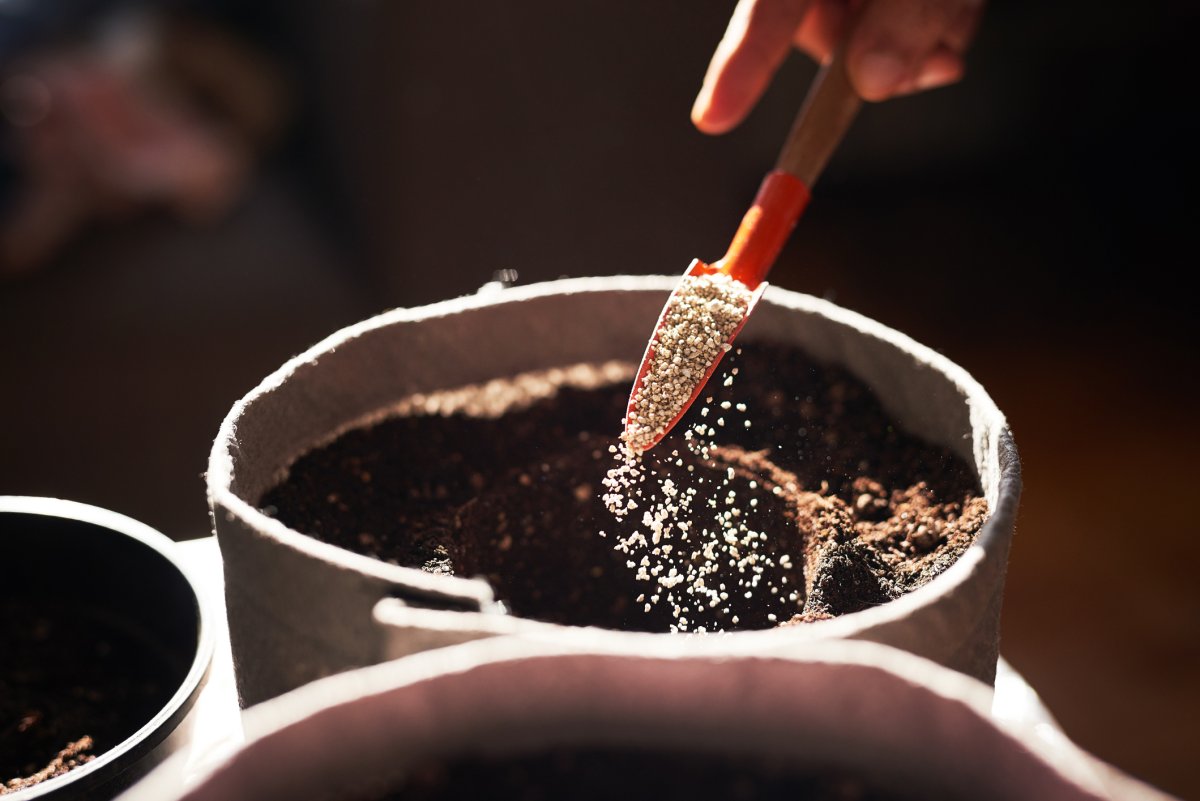Autoflower cannabis plants lack growling stomachs, but they crave sustenance. You must find the best nutrients for autoflowering cannabis if you’re to nurture them until they yield big buds.
So, what are the best nutrients to grow your autoflower plants? How much of these nutrients do they need, and when should you schedule your plants’ meals?
You have the questions, and we’ll provide the answers. Read on to learn more about the ideal nutrients for autoflowering cannabis and how to get the most from them.
Table of Contents
Do You Need Nutrients For Autoflowers?
Yes, you do.
Cultivating high-quality cannabis demands skill and a touch of finesse. Achieving the right balance of light, moisture, heat, and nutrition is essential. While not overly complex, having a good understanding of the process helps.
Auto-flowering plants might appear less complicated than photoperiods, particularly regarding lighting needs. However, simplicity doesn’t equate to no effort.
You must give your auto plants the necessary elements for root, stem, leaf, and bud growth. That’s where proper nutrition plays a crucial role.
Can You Grow Autoflowers Without Nutrients?
Certainly, it’s possible to theoretically cultivate plants using only water. Nevertheless, this approach will reduce your yields significantly, something no one desires.
And the quality of your weed will be no better than ditch weed! It actually doesn’t make sense to invest in a grow setup, but fail to feed your plants adequately because you’ll the money.
Auto-flowering plants have less nourishment needs compared to photoperiod varieties, but they surely need the right nutrients in every stage.
Nutrients: Auto vs. Photo
In the realm of cannabis cultivation, there are lots of nutrients, and it can be confusing on what to use for your autos. You can grow auto-flowering plants better with nutrient products specially crafted for their unique needs. There is no bigger secret, find nutrients for nurturing auto-flowers and ensure they’re appropriate to every stage.
Packaged liquid nutrients designed for soil or hydroponic setups are effective for auto-flowers, just like for photoperiod plants. The quantities administered to the plants differ. However, seldom shall you find the need to swathe your plants with store-bought nutrients at their full, towering strength; many brands recommend excessively high dosages. Regardless, with auto-flowering plants, considerably less nutrient input is needed than photoperiod strains.
The optimal pH for auto-flowering plants aligns with that of photoperiod strains. This would be approximately pH 6.5 for soil cultivation and for hydroponics, around 5.8. Maintaining the right PH maximizes a nutrient uptake and utilization within the plant. Thus observe the PH fluctuations.
What Nutrients Do Autoflowers Need?
Nutrients for plants exist in various forms. The usual types are mixed with water, blended into the soil, or in powder form. This powder can be sprinkled on the soil to release nutrients or mixed into the growing material slowly.
Newbie gardeners often wonder, “Which nutrients are the best?” The answer hinges on your choice and how you’re growing. In essence, there are two main kinds: organic and inorganic nutrients. These two have a significant contrast, even though they can be in any of the three forms mentioned earlier. Their functions differ greatly.
Organic Vs. Inorganic
Organic fertilizer focuses on creating a thriving environment in the soil, teeming with tiny organisms. When you use organic nutrients, you’re not directly feeding the plant. Instead, you’re enriching the soil where microorganisms live.
These microorganisms then feast on the nutrients, breaking them down and making them easy for the plant to soak up.
Because the plant isn’t directly fed, it can decide when and which nutrients to absorb. This means running into problems caused by too much or too little nutrients is challenging unless you deliberately cause it.
On the flip side, inorganic nutrients deliver precise nutrients to the plant’s roots. However, you must be well-versed in the needs of your autoflowering plants to pull this off without harming the plant. The nutrients necessary for optimal growth vary from one strain to another. This complexity makes it tough to pinpoint the exact what and when of feeding. Generally, you start experimenting, and if you notice signs of underdevelopment or nutrient deficiencies, you increase the feeding a bit.
Adding to the mix, you’ll need to fine-tune the nutrient quantities for autoflowers to prevent wasting nutrients (in the organic method) or inadvertently damaging your plants (in the inorganic approach).
Manufacturers often provide instructions with a rough schedule and amounts for their products, but these guidelines are often geared toward photoperiod plants. With this in mind, kick off with half the recommended amount when working with autoflowers.
Slow-Release
Slow-release nutrients can be found as small pellets or powders. They’re usually used as a top dressing on the soil or mixed into it beforehand. This simple method gradually releases nutrients whenever you water the plant. So, you don’t need to constantly stress about feeding your plant unless you spot any signs that it lacks nutrients.
When using the slow-release technique, water more frequently but with less water each time.
This helps the pellets or powder dissolve faster. Note that the instructions on these nutrients are typically aimed at photoperiodic plants. For autoflowers, a general rule is to use about half of the recommended amount mentioned in those instructions.
Bottled Nutrients
Bottled nutrients are something almost everyone, whether a grower or not, is familiar with.
These fertilizers come in liquid form and are quite affordable due to their ready availability. These synthetic nutrients are favored by many growers, even though they aren’t as gentle as organic options. You can successfully cultivate and harvest your plants using these synthetic nutrients. Various brands offer them, and while their quality might differ, they all contain the same basic elements and ratios for the growth and flowering stages(3-1-2). It mostly boils down to personal preference.
However, unlike organic nutrients that focus on nurturing a soil ecosystem, synthetic nutrients directly nourish the plant’s roots. This means you must be careful because giving too much can easily burn your autoflowers. To avoid this, start with a smaller amount and gradually increase it. This allows you to observe your plant’s signals and adjust the nutrient amount according to its needs. This not only prevents wasting nutrients but also saves your plants from harm.
Remember that synthetic nutrients are artificial, so they might eliminate the beneficial microorganisms in the soil. Depending on the growing medium, you might need to supplement with micronutrients like Calcium and Magnesium.
When possible, it’s a good idea to lean towards organic nutrients. They help maintain a natural ecosystem in your soil, resulting in tastier flowers and a reduced risk of overfeeding your autoflowers.
Feeding Autoflowering Cannabis
Worrying about NPK ratios might seem common, but most autoflowers tend to thrive as long as they have access to a bit of each nutrient. In the vegetative stage, cannabis plants usually desire lots of nitrogen. As they move into the preflower phase, an increase in phosphorous is helpful. This pattern continues into flowering, where higher levels of potassium aid in the process until the plants are ripe. Towards the final days of flowering, nutrient intake decreases significantly.
Feeding autoflowers isn’t complicated, but the real challenge is avoiding overfeeding. Giving too much nutrients to an auto can lead to difficulties. This is particularly tricky to undo. Since autoflowers mature according to their age, subjecting them to healing stress can significantly slow down their growth if not handled correctly.
Seedling
During this growth phase, a cannabis plant is quite delicate because its root system is not yet well-developed. It lacks the ability to take in strong nutrients and relies on nutrients stored in the seed and available from the air. Be cautious about overfeeding in the early stages.
Only if you notice signs of nutrient deficiency in a seedling should you consider introducing feeding. If that’s the case, start with a very weak nutrient solution and provide it every other time you water the plant.

However, you can gradually introduce more nutritious food after approximately a week. The key here is to take things slowly. Begin with just 1/8 of the recommended strength of the plant food supplements. It’s important not to overdo it, as overwhelming your young plants could result in their demise. That would not only be unfortunate but also a waste of both money and resources.
The ideal NPK ratio at this stage is 2:1:2.
Vegetative
Autoflowering cannabis plants don’t spend much time in the growing stage; they quickly move from being seedlings to entering the flowering phase. It’s smart to consider adding more nitrogen to their diet to maximize their growth. This helps the plants establish sturdy branches and leaves before they enter the pre-flowering stretch. A healthy autoflower usually starts growing about ten days after germination or once the first set of leaves with five distinct fingers emerges.
It’s a good practice to slowly adjust the nutrient schedule, avoiding sudden changes that could shock or hinder the plants. As the flowering phase approaches, it’s even possible to blend the nutrients for growth and flowering to ensure a balanced transition as the plant gears up for blooming.
The ideal NPK ratio at this stage is 10:5:5
Here’s a simple schedule to guide you in keeping your plants healthy and thriving:
Week 1: When dealing with seedlings, stick to pH-adjusted water. Aim for between 5.8 and 6.2 – this range is just right for your young plants. Anything below 7.0 is acidic, while levels above 7.0 are more alkaline.
Week 2: As the vegetative stage begins, use a fertilizer mixture that’s at 1/8th strength.
Week 3: You can increase the concentration a bit to 1/4th strength.
Week 4: Now, the pre-flowering stage is starting. It’s time to raise fertilizer to 1/2 of the recommended nutrients.
Week 5: As your plants start forming their first buds – exciting times! — reduce the strength back to 1/4.
Week 6: Welcome to the flowering stage! Aim for a fertilizer and water mix that’s at 1/2 strength.
Weeks 7 and 8: As you move closer to harvest time, shift back to using pH-adjusted water for these last couple of weeks.
Pre-Flowering
The pre-flowering stage marks a time of rapid growth when a cannabis plant begins its flowering journey. However, this phase varies for autoflowers since they’re less sensitive to sudden light changes. The “stretch” period for autoflowers lasts around 1–2 weeks and isn’t as intense as it is for photoperiod plants (which stretch due to significant shifts in light).
Certain autoflower growers continue using growth-focused nutrients during the initial flowering weeks. Adding more nitrogen during the early flowering phase can stimulate growth, but be cautious not to overdo it, as excessive nitrogen might cause excessive leaf growth.
Be on the lookout for early yellowing, which could signal a need to increase nutrient levels. Moreover, boosting phosphorous levels during this stage can also jumpstart the production of flowers.
The ideal NPK ratio at this stage is 10:10:5
Flowering
As autoflowers progress to their full flowering phase, reduce the amount of nitrogen you give them. Adjust the feeding routine to provide higher levels of phosphorous and potassium instead. Prioritize phosphorous as it fosters bud production. Neglecting it might result in disappointing harvests.
A product like PK 13-14 can be really helpful for supplying extra phosphorous and potassium without additional nitrogen. Nonetheless, don’t entirely overlook nitrogen – it still has a role to play, so ensure your nutrient mix contains some. As the plant completes its growth spurt, consider gradually decreasing the nitrogen content while increasing the phosphorous and potassium levels, especially during the later flowering stages.

The timing of reducing nutrients for autoflowers depends on how heavily you’ve been feeding them. You might need to start decreasing nutrients a bit earlier or later. Allow the buds a day or two to mature without feeding until harvest day.
The ideal NPK ratio at this stage is 5:15:10
Which Grow Medium Are You Using?
The type of growing medium you use heavily influences the timing and quantity of feeding for your autoflowers. Soil typically contains nutrients, while hydroponic systems lack this natural nutrient supply. Moreover, the method through which nutrients reach the plant also differs. In hydroponics, there isn’t a medium for minerals to adhere to before the plant absorbs them. This contrasts with soil, where minerals interact with the medium before being taken up by the plant.
Soil
Most soils used for growing cannabis already hold the necessary micronutrients and macronutrients to provide autoflowers with sufficient nourishment throughout the vegetative phase. If you observe yellowing leaves before the flowering stage, it’s a sign to begin feeding. However, start with a gentle amount and gradually increase the dosage with each feeding if your plants appear to be responding positively.
Hydroponics
When using a hydroponics system, fill the reservoir with a diluted nutrient solution after the plants have developed 3–4 sets of leaves. However, if there are signs of nutrient deficiency before this stage, start feeding earlier. Keep an eye out for these signs so that you’re ready to provide nutrients as soon as the plants indicate their need.
Coco Coir
Coco coir is a neutral growing medium with minimal inherent nutrients for cannabis plants. This might necessitate initiating feeding schedules earlier. While specific nutrients designed for coco coir are available, hydroponic nutrients can also be used without issues. You can combine with perlite to improve absorbability and aeration.
Organic Super Soil
You can prevent overfeeding by cultivating your plants in homemade organic soil. This eliminates the necessity for adding external nutrients unless the plants explicitly require it. Organic super soil breaks down natural components slower, making it less likely to overfeed your plants using this method accidentally.
In conclusion, autoflowers are the easiest to grow due to their limited needs. They’re the best place to begin as a novice grower. However, autos too, need nutrients, and you have to give them stage-specific nutrient blend to foster their growth and bud production.

